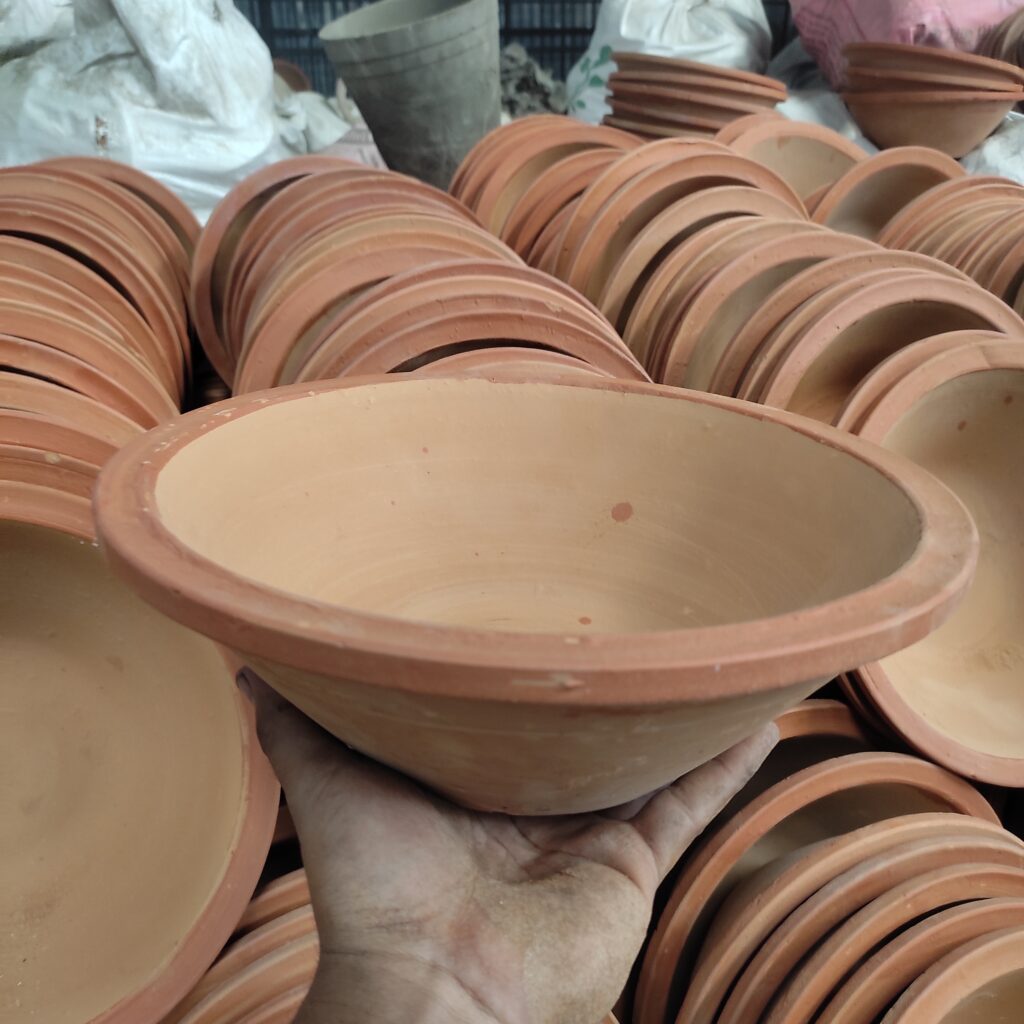
3-liter terracotta plate is not typically used for making curd (yogurt). Curd or yogurt is typically made in a container or vessel that can hold the milk and allow it to ferment. Terracotta pots or containers are commonly used for this purpose due to their natural insulating properties and ability to maintain a steady temperature during the fermentation process.
Here’s how you can use a 3-liter terracotta pot to make curd:
Ingredients:
- Milk (usually 3 liters for a 3-liter pot)
- A small amount of yogurt starter culture or curd from a previous batch
Instructions:
- Clean the terracotta pot thoroughly to ensure it’s free from any contaminants.
- Heat the milk in a separate pot until it reaches a temperature of around 180°F (82°C). Heating the milk helps denature the proteins and create a better texture for the yogurt.
- Allow the milk to cool down to about 110-115°F (43-46°C). This is the ideal temperature for adding the yogurt starter culture. If the milk is too hot, it can kill the live cultures in the starter culture.
- While the milk is cooling, take a small amount of yogurt starter culture or a few tablespoons of yogurt from a previous batch. Make sure it contains live active cultures.
- Once the milk has reached the right temperature, add the yogurt starter culture or the yogurt from the previous batch to the terracotta pot. Mix it well with the milk.
- Cover the terracotta pot with a lid or a cloth and place it in a warm, draft-free place. The terracotta pot’s natural insulation will help maintain the temperature required for fermentation.
- Allow the milk to ferment for at least 6-8 hours or until it reaches the desired thickness and tanginess. The longer you leave it, the tangier it will become.
- Once the curd is set, you can refrigerate it to stop the fermentation process and chill it before serving.
Remember that the exact fermentation time may vary depending on various factors, including the ambient temperature and the specific strain of cultures used. It’s essential to monitor the curd periodically to achieve the desired consistency and flavor.
So, while a 3-liter terracotta pot can be a suitable vessel for making curd, it’s not referred to as a “plate” but rather a container or pot. Make sure to follow proper hygiene practices and maintain the right temperature for successful curd fermentation.
